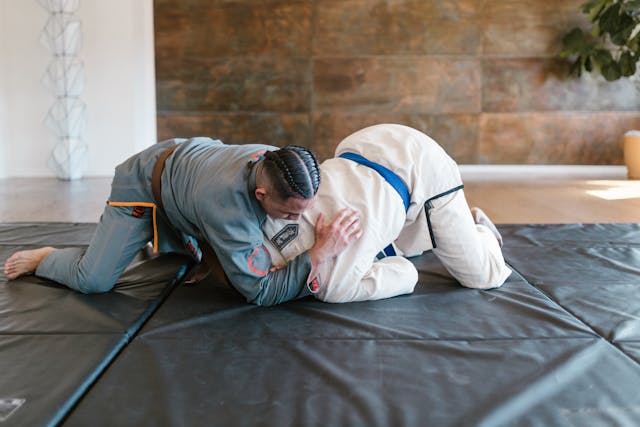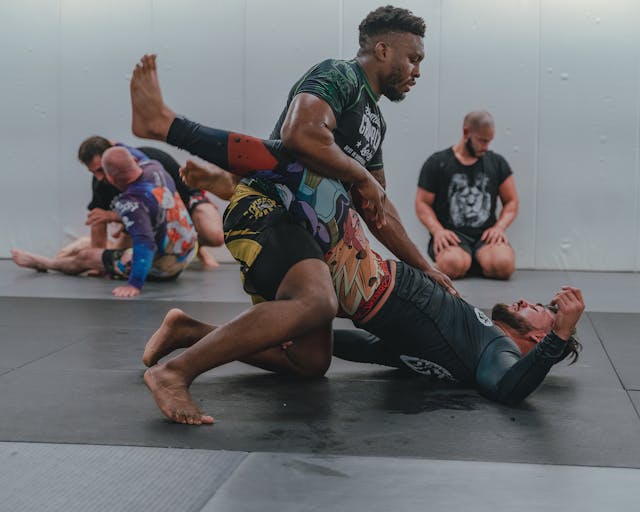Gi vs No-Gi: Which Style Reigns Supreme in BJJ?
Gi vs No-Gi: Which Style Reigns Supreme in BJJ?
Walk into any Brazilian Jiu-Jitsu gym and you’ll eventually overhear the debate, gi or no-gi? One involves thick collars and grips that feel like hand-to-hand chess. The other? Slick, fast-paced grappling where sweat becomes an opponent in its own right. Both forms have their diehards. Both shape your game. But which is “better”? And is that even the right question?
Let’s untangle the gi from the rash guard and look at what really matters when choosing your path.
What Is Gi and What Is No-Gi?
A traditional kimono, jacket, trousers, and belt are used by newcomers to Gi Jiu-jitsu. It's what most people picture when thinking of martial arts. The Gi slows things down. It adds friction, and the fabric itself becomes a tool. You can grip the sleeves, collar, and even the trouser legs to control your opponent.
No-Gi Jiu-jitsu is practiced in rash guards and shorts, similar to wrestling gear. There’s less friction, no handles, and a faster, more explosive pace. Grips rely on underhooks, head control, or wrist ties instead of grabbing fabric and maintaining control that way.

The Case for Gi: Grip, Patience, and Technical Depth
Training in the gi forces you to slow down. That might not sound appealing, but for developing sound technique, it’s gold. You can't explode out of a difficult position with athleticism alone. You’ve got to learn proper escapes. You’re given more time to think, and as a result, more time to make decisions that develop your mat IQ.
The gi also offers a broad library of techniques, including label chokes, spider guard, worm guard and many others. It rewards grip strength and grip fighting, and the fabric allows for intricate control that no-gi does not.
And, let’s be honest, there’s something about tying your belt, earning your stripes, and wearing that heavy fabric armor. It connects you to Jiu-jitsu's roots. There's a ritual to it.
The Case for No-Gi: Speed, Pressure, and Realism
Then there’s no-gi. It’s faster. It’s slippier. There’s less to hang on to and fewer places to hide. Some would argue it’s closer to “real fighting,” since most street fights don’t involve someone in a thick cotton jacket. MMA fighters almost exclusively train no-gi for this reason.
Because you can’t rely on grips, no-gi emphasizes body positioning, movement, and transitions. It's far more scramble-heavy, and you'll often see people explode through positions where in gi, they might’ve been held in place.
From a conditioning standpoint, no-gi can be more demanding. The pace is relentless. If you’re not used to it, prepare to feel like your lungs are fighting harder than your limbs.

Which Is Harder?
That depends on who you ask, and probably what they started with.
Gi practitioners might say no-gi feels like chaos at first. Everything is faster, slippier, and less controlled. No-gi folks often struggle with the endless grip fighting and lapel entanglements that gi presents.
But the truth is, both are challenging in different ways. Gi demands patience, technical precision, and grip endurance. No-gi tests your athleticism, reaction time, and ability to adapt without fabric-based control.
Competition and Pathways
If you’re aiming to compete, you’ll eventually have to make a choice, or train for both. IBJJF, one of the biggest BJJ governing bodies, runs events in both gi and no-gi. ADCC, on the other hand, is exclusively a no-gi tournament and arguably the most prestigious no-gi tournament in the world.
Many top athletes today, think Gordon Ryan, Tye Ruotolo, or Ffion Davies, train primarily no-gi. But legends like Roger Gracie or Marcus "Buchecha" Almeida built their dominance in the gi.
Some gyms lean heavily in one direction. Others offer both. Ideally, your training reflects your goals.
So… Which One Should You Train?
That depends on why you’re training in the first place.
If you’re in it for the art, the tradition, or enjoy slower, more technical exchanges, the gi might be your calling. If you’re more interested in self-defense, MMA, or high-paced grappling then no-gi might suit you better.
But here’s a secret that often gets buried in the gi vs no-gi arguments: both make you better.
You will gain a better understanding of control when you train with a gi. It forces discipline and rewards precision. No-gi sharpens your reactions, your scrambling ability, and your ability to impose pressure quickly.
Cross-training gives you the best of both worlds. Your no-gi game becomes more technical. Your gi game becomes more athletic.
Final Thoughts
In the end, gi vs no-gi isn’t a fight to the death. It’s a choice between different tools and most high-level grapplers use both. You don’t have to pick a side. You just have to keep showing up.
And that’s what matters in Jiu-Jitsu.
